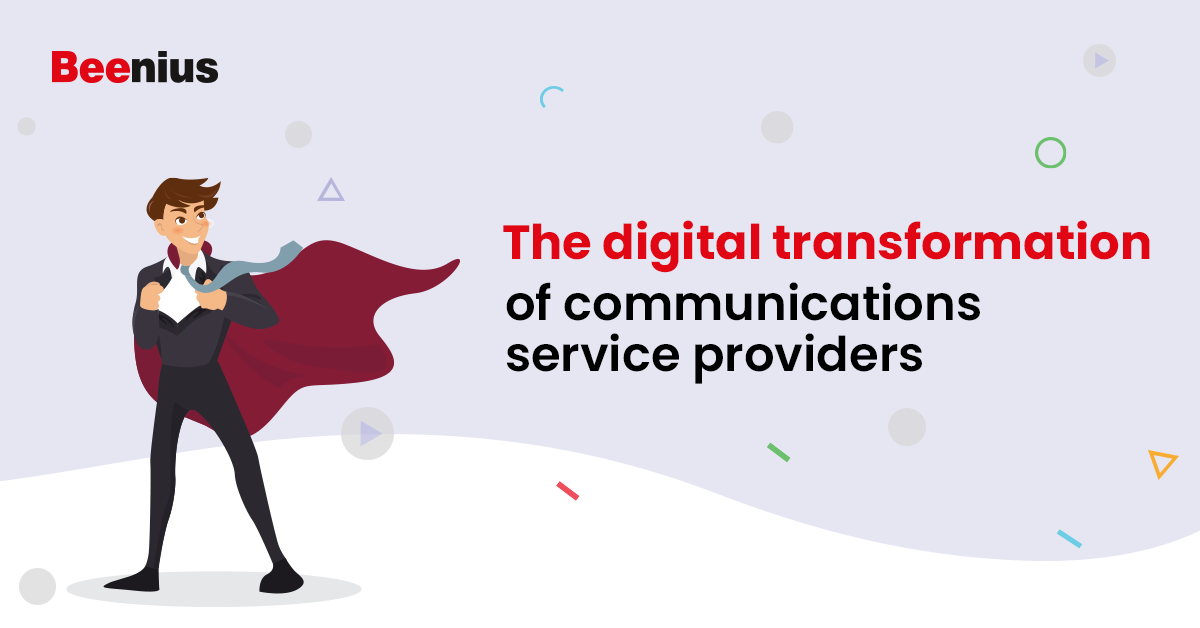Industry Trends
The digital transformation of Communication Service Providers
- By BeeniusMKT
- No Comments
05 Jun

After TM Forum published the first three Digital Transformation Trackers (DTT), the industry started to shift its views on digital transformation in relation to culture. Realizing the importance of cultural change and how it affects digital transformation is the key. Like their previous editions of DTT, the fourth report covers surveys involving Communication Services Providers (CSP). The CSPs in the latest survey accounted for 150 executives from 75 different companies. Approximately 40% of the feedback came from executives in the IT field. 16% of the input came from individuals on the network side. The feedback received was on a global level, distributed as below:
5.5% from North America
11.5% from Latin America/Caribbean
17% from the Middle East and/or Africa
31% from Europe and/or Russia
25% from Asia-Pacific
10% from Global
CSPs have amped their recruitment of data scientists, developers, cloud specialists, and architects. The surveys help analyze the transformation programs and viewpoints from executives regarding their own business/ telecoms industry.
The Big Picture
The most significant takeaway from the survey responses is the lack of digital transformation programs since the first DTT report conducted in 2017. The analysis shows that approximately one-third of operators have not even begun transformation programs, while the ones that have are still in the initial phases. There are a few reasons why this may be the case.
TM Forum assumes that the reason behind the lack of digital transformation among the CSPs is either the telecom operators’ stagnating revenues, lack of information to support a more realistic set of responses or statistics which suggests that most digital transformations fail, which fuels fear and uncertainty.
Analyzing the survey’ results
Results show that CSPs are reasonably optimistic for the long term and short term development of their business and their aspirations slowly shifted from a multi-play operator that partners with internet and other digital providers in 2018, to platform providers who work with partners to bring their services to the market in 2020. Embracing a platform business model allows the CSPs to provide their core services while complementing them with partners in ecosystems to introduce new capabilities.
The Digital Transformation Progress
Not acting fast enough on the digital transformation brings a lack of competitive advantage for the CSPs, in comparison to the hyperscale service providers. By not transforming the customer experience, CSPs risk losing the customer relationship, which will force them down the value chain as a wholesaler or enabler only. These outcomes are inevitable without adopting the digital transformation; therefore, the industry expects facilitation of the process.
More than 70% of the CPSs that are in the process of digital transformation are from Western Europe or North America. On the other hand, 80% of CSPs that have not started digitally transforming, come from the Middle East and Africa, India, Latin America, or Eastern Europe.
One theory as to why this is the case is due to resources. Operators from West Europe and North America have more significant resources, which includes mainly insourcing needed software capabilities and skills. Besides, the cost-cutting mode of the mobile market is more aggressive in developing countries.
Another theory is that the mobile market has abruptly enabled a cost-cutting mode. Emerging markets also have lower adoption of cloud-based services, which leads to poor awareness of the cloud-based services capabilities and less demand from the B2B market.
On top of the above theories, CSPs emphasized the following barriers to their digital transformation:
- No available budget
- Regulatory requirement
- Availability of skills
- The complexity of the products and processes
- Weak governance structure
- Organizational risk aversion
- No sense of urgency
- Lack of an industry roadman
- Cultural and organizational issues
- Lack of top management support
- Lack of clear and aligned vision
Strategies to Make It Happen
Digital transformation requires CSPs to use reinforcement and repetition. New methods are uncomfortable for most as they are unfamiliar; therefore, constant reminders are essential. Without the understanding of past unsuccessful initiatives, staff will revert to tested and tried approaches.
Effective strategies utilize cultural change as it directly correlates to the adoption of new technology. CSPs need to take a holistic view of systems and people that utilize them. As stated above, over a third of CSPs have not begun the transformation. Therefore starting now is crucial. Finally, a transformation program should always pay attention to the gaps within the organization.